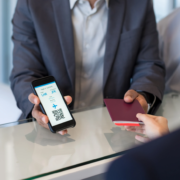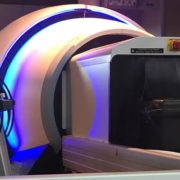Mobile applications in the aviation industry
In recent times, it’s evident how mobile applications related to air transport have multiplied, and have promoted major changes in the aviation industry. From the improvement of internal processes to cope with any kind of operational disruption, as happened during the pandemic, to those focused on customer satisfaction by transforming the way they travel.
We live in an interconnected world and there is a clear need to have as much information and services as possible on our mobile devices. Thanks to this, more and more airlines and airports are focusing their efforts on developing technology that allows them to be at the forefront of the needs while helping to reduce costs, optimize revenues, improve labor productivity, and above all innovate while making life easier for their passengers.
The use of this type of technology can also become a differentiating branding tool. Now that many airlines are seeking to build customer loyalty through attractive benefits that play an important role in passengers’ decision to travel.
Now, let’s take a look at the latest technologies that have been used in the airline industry and are being tested around the world.
For example, contactless self-check-in and baggage handling technology are being tested in many airports, as well as mobile applications that allow airlines to scan travelers’ passports and visas at different checkpoints, thus speeding up long waiting lines and reducing waiting times, which is a huge benefit for passengers.
On the other hand, airlines are looking for ways to integrate into their mobile applications options that allow passengers to manage their services without the need for a cabin crew member anywhere in the travel chain and especially without contact. So if a passenger wants to use the entertainment systems of the aircraft, he can do it just by scanning a QR code from his mobile device and thus choose what he wants to see while interacting with the crew to buy products or services such as food or duty-free items.
These types of technology platforms not only serve to meet the needs of passengers, but also provide airlines and airports with the opportunity to understand passenger behavior and purchasing patterns. This allows companies to segment the market and personalize their offers.
Similarly, facial recognition technology continues to make inroads in the industry, and biometric identification options are expected to become common in the coming year, as their benefits are not only focused on passengers but also help to reduce costs, optimize resources, and speed up boarding times.
Even now, facial recognition payment technologies and contactless fingerprint scanning are being tested.
Similarly, another area that is being impacted by mobile technology platforms is the administrative sector of the airline industry where they are beginning to implement port management systems that allow airports to manage data in real-time with cloud support. That helps the organizations involved to be more efficient in managing information, concessions, contracts, billing, and payment of services.
Today there are many development companies specialized in the aviation industry that continually offer solutions that improve processes, encouraging a market that has been greatly affected in recent years by the pandemic of COVID-19 as is GP Nautical. who have focused their efforts on creating innovative technology platforms for the aviation sector that allows any port to have a management system of the last generation with minimal investment.










Leave a Reply
Want to join the discussion?Feel free to contribute!